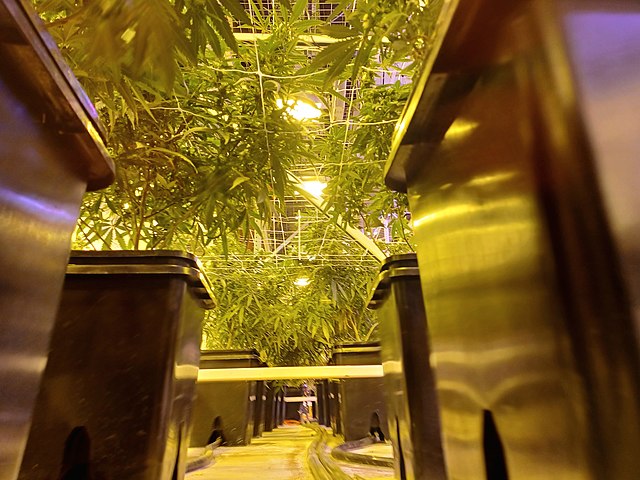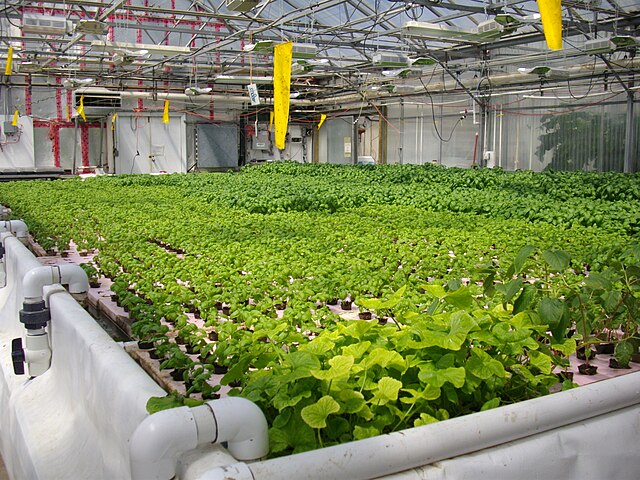Hydroponics is a type of horticulture and a subset of hydroculture which involves growing plants, usually crops or medicinal plants, without soil, by using water-based mineral nutrient solutions in an artificial environment. Terrestrial or aquatic plants may grow freely with their roots exposed to the nutritious liquid or the roots may be mechanically supported by an inert medium such as perlite, gravel, or other substrates.
NASA researcher Ray Wheeler checking hydroponic onions (center), Bibb lettuces (left), and radishes (right)
Inside an ebb-and-flow hydroponic system employing individual buckets connected by fill/drain hoses.
The deep water raft tank at the Crop Diversification Centre (CDC) South Aquaponics greenhouse in Brooks, Alberta
The nutrient film technique (NFT) being used to grow various salad greens
Plant nutrition is the study of the chemical elements and compounds necessary for plant growth and reproduction, plant metabolism and their external supply. In its absence the plant is unable to complete a normal life cycle, or that the element is part of some essential plant constituent or metabolite. This is in accordance with Justus von Liebig's law of the minimum. The total essential plant nutrients include seventeen different elements: carbon, oxygen and hydrogen which are absorbed from the air, whereas other nutrients including nitrogen are typically obtained from the soil.
Three soil scientists examining a farm land sample





